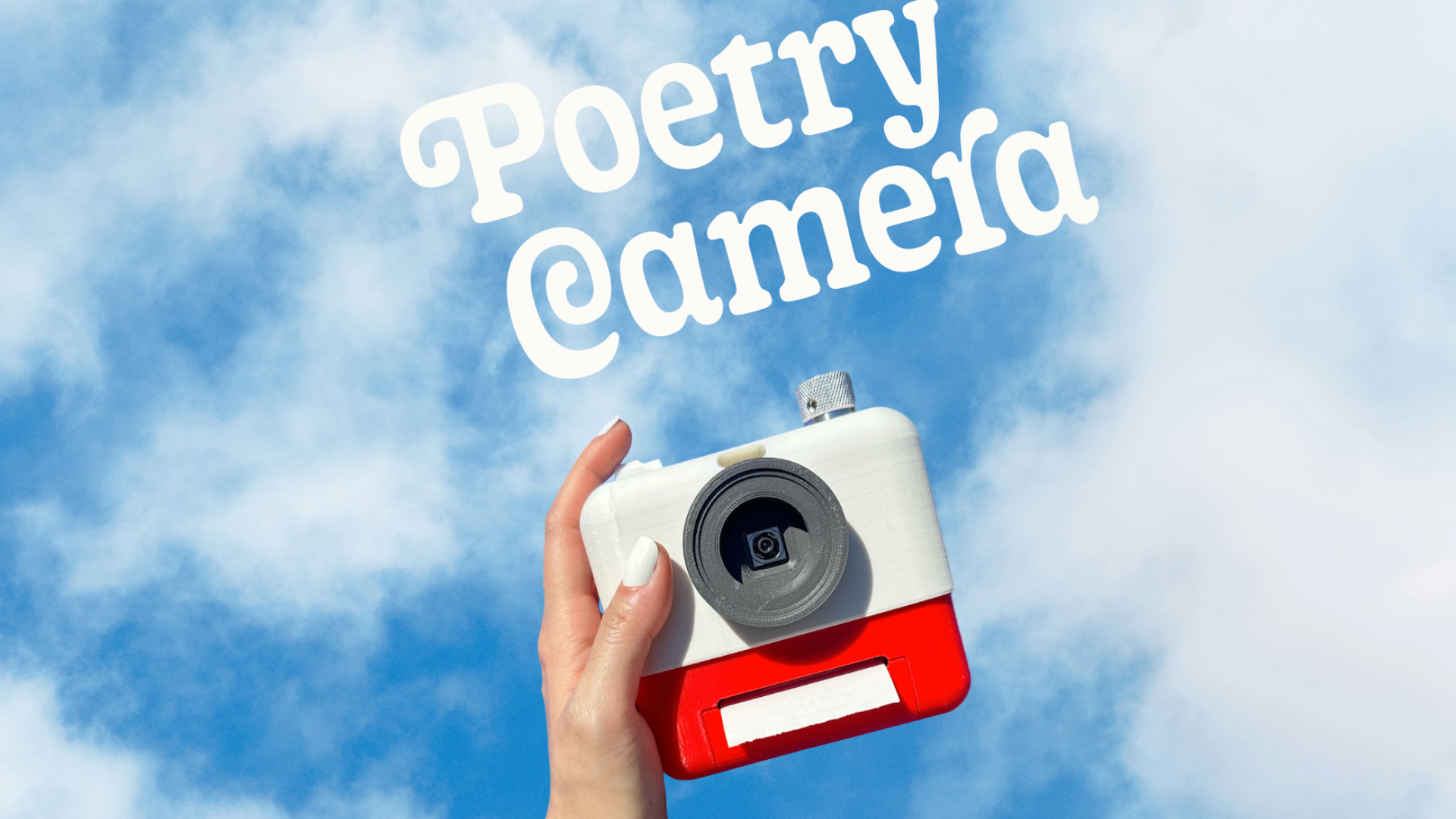
Kelin Carolyn Zhang and Ryan Mather have created the Poetry Camera, an open-source device that transforms images into poetic expressions.
This innovative camera combines cutting-edge technology with artistic vision, challenging traditional digital interactions and offering a novel way to experience and create art.
The Creative Journey Begins
The concept behind the Poetry Camera arose from a blend of personal interests and professional expertise in technology and the arts.
Zhang and Mather, inspired by the capabilities of AI in creative scenarios, explored how AI could extend beyond conventional uses. Mather, reflecting on his initial experiments with OpenAI’s GPT-3, envisioned a device that could shift the focus from visual representation to textual expression, critiquing the prevalent culture of image sharing on platforms like Instagram.
How the Poetry Camera Works
The technical foundation of the Poetry Camera is a Raspberry Pi, a compact yet powerful single-board computer. This component captures images and processes them using computer vision algorithms that analyze visual data. Following the image capture, the device utilizes AI models to identify key visual elements, such as colors, patterns, and emotional nuances. The AI then crafts poetry based on these elements, with options for different poetic forms like haiku, sonnet, or free verse, allowing users to interact with the technology and customize their experience.
During its development phase, the Poetry Camera was primarily a passion project, shared and refined through feedback from friends and family at social gatherings. The device generated considerable interest for its unique ability to create ephemeral poetic artifacts from everyday scenes, igniting conversations and appealing to a broad audience. The initial enthusiasm and fascination from these informal showcases encouraged Zhang and Mather to consider a broader application for their project.
A Privacy-Focused Design
The device’s design eschews digital storage to prioritize privacy and simplicity, aligning with broader contemporary concerns about digital data management. Instead of saving images or poems, the Poetry Camera prints them immediately, creating a unique, one-time artifact that underscores the fleeting nature of moments.
This approach also adds a layer of privacy and security, appealing to users in an era of heightened sensitivity to digital footprints.
Zhang and Mather’s innovation not only challenges the norms of digital photography but also redefines interactions with technology. Unlike conventional digital devices that often emphasize persistent digital records, the Poetry Camera focuses on the immediacy and intimacy of the artistic experience.
The tactile aspect of handling a printed poem enhances the personal connection to the art, fostering a contemplative and immersive interaction.
Commercial Potential and Ethical Considerations
As the device garners interest, the creators started contemplating its commercial potential, spurred by the persistent inquiries and interest from the public.
While their initial response was to resist commercialization in favor of preserving the artistic purity of the project, the demand has led them to explore possibilities for making the device available on a larger scale, though in a thoughtful and limited manner to ensure quality and sustainability.
Looking forward, Zhang and Mather are considering how best to balance the commercial aspects of their invention with their original artistic and ethical intentions. They envision the Poetry Camera not just as a novelty but as a catalyst for rethinking the relationship between technology and art. Their goal is to inspire a broader dialogue on how AI can be integrated into daily life in ways that enhance human creativity and interaction, rather than merely automating or replicating human tasks.
This project exemplifies the potential of combining technology with artistic creativity to create new forms of expression and experience.
As Zhang and Mather continue to refine their creation, they also hope to encourage others to explore the intersections of technology and art, potentially leading to further innovations that enrich our cultural and personal lives.
Related News:
Featured Image courtesy of Poetry Camera
